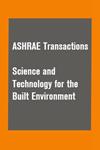卤代烃制冷剂及其与润滑油共混物的化学稳定性研究
IF 1.6
4区 工程技术
Q3 CONSTRUCTION & BUILDING TECHNOLOGY
Science and Technology for the Built Environment
Pub Date : 2023-08-29
DOI:10.1080/23744731.2023.2253085
引用次数: 0
摘要
本文章由计算机程序翻译,如有差异,请以英文原文为准。
Chemical Stability Investigation of Haloolefin Refrigerants and Their Blends with Lubricants
This paper examines the findings of highly accelerated life tests (HALT), conducted according to ASHRAE Standard 97 sealed glass tube methodology for R-123 like, R-134a like and R-410A/R-404A like lower global warming potential (GWP) alternatives. Additionally, possible chemical breakdown pathways are reviewed for the new haloolefin refrigerants. Note, compositions for the following blends are shown as percent by weight. For R-123 like refrigerants, R-1336mzz(Z), R-1336mzz(E), R-514A (74.7% R-1336mzz(Z)/25.3% R-1130(E)), R-1233zd(E), and R-1224yd(Z) were examined with and without lubricants. R-1233zd(E) and R-1224yd(Z) were evaluated with mineral oil and the rest were evaluated with polyalkylene glycol (PAG), polyolester (POE) and polyvinyl ether (PVE) lubricants. For R-134a like refrigerants, R-1234ze(E), R-450A (42% R-134a/58% R-1234ze(E)), R-515B (91.1% R-1234ze(E)/8.9% R-227ea), R-1234yf, R-513A (56% R-1234yf/44% R-134a), and R-516A (77.5% R-1234yf/8.5% R-134a/14.0% R-152a) were examined with and without PAG, POE, and PVE lubricants. For R-410A/R-404A like, R-454B (68.9% R-32/31.1% R-1234yf), R-454C (21.5% R-32/78.5% R-1234yf), R-455A (3.0% R-744/21.5% R-32/75.5% R-1234yf), and R-468A (3.5% R-1132a/21.5% R-32/75.0% R-1234yf) were also examined with PAG, POE and PVE lubricants. R-466A (49% R-32/11.5% R-125/39.5% CF3I) was part of this study but will not be covered since it does not contain a haloolefin component.
求助全文
通过发布文献求助,成功后即可免费获取论文全文。
去求助
来源期刊

Science and Technology for the Built Environment
THERMODYNAMICSCONSTRUCTION & BUILDING TECH-CONSTRUCTION & BUILDING TECHNOLOGY
CiteScore
4.30
自引率
5.30%
发文量
78
期刊介绍:
Science and Technology for the Built Environment (formerly HVAC&R Research) is ASHRAE’s archival research publication, offering comprehensive reporting of original research in science and technology related to the stationary and mobile built environment, including indoor environmental quality, thermodynamic and energy system dynamics, materials properties, refrigerants, renewable and traditional energy systems and related processes and concepts, integrated built environmental system design approaches and tools, simulation approaches and algorithms, building enclosure assemblies, and systems for minimizing and regulating space heating and cooling modes. The journal features review articles that critically assess existing literature and point out future research directions.
 求助内容:
求助内容: 应助结果提醒方式:
应助结果提醒方式:


